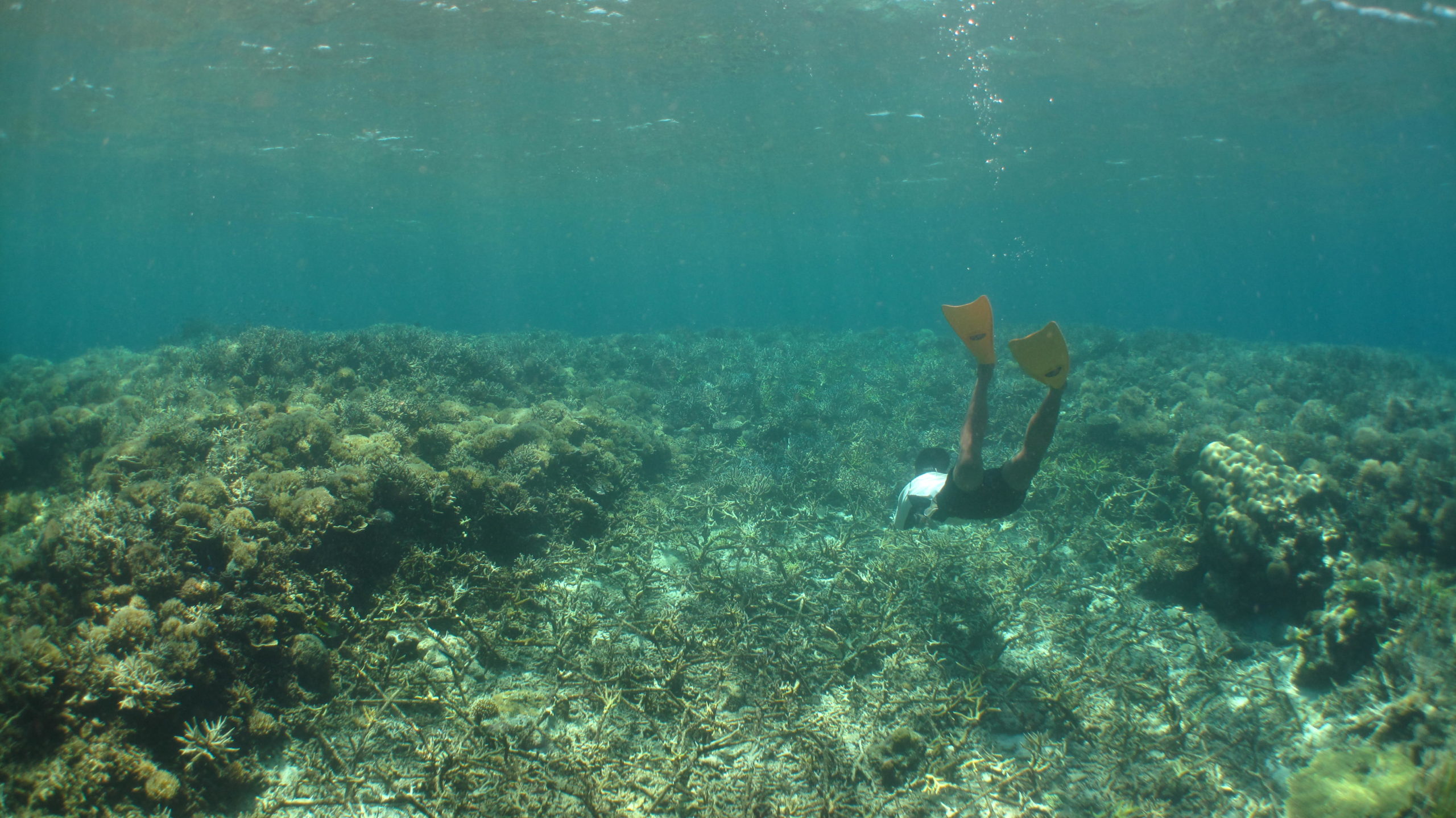I spent September in Indonesia working with our field staff and visiting our partner communities in Karangasem and Buleleng in northern Bali. While there, I was invited to visit some coral reefs off the West coast of Sulawesi. It was rumored that some areas had 100 percent live coral cover, so I jumped at the chance to go and see for myself.
Before I tell you what I saw in the water, I need to explain just how skeptical I was of the reported health of those reefs. I have completed more than 1,000 coral surveys in the past few years with Reef Check Australia and other research groups. In my experience, when people say a reef has 100 percent live coral cover it is usually closer to 70 percent. So, it was with some skepticism that I headed off to Sulawesi take a closer look.
To get to the dive site I took a 30-minute boat ride from the city of Makassar in Southwest Sulawesi to Pulau Badi. The area off Makassar is heavily fished, using both cyanide and bombs, so I was not sure what I would find when I jumped into the water.
What greeted me was amazing. There truly was 100 percent live coral cover. I hadn’t seen reefs like this ever before. They were beautiful—not many fish, but so much coral diversity. Moreover, I didn’t see any signs of bleaching, the global bleaching event of the last few years seemed to have left these corals untouched.
What I found most interesting is that these healthy patches of coral were next to areas that had been bombed for fishing. These areas were not recovering due to unstable coral rubble being swept around in the currents. A group of us went to visit Pulau Badi to see how Mars Symbioscience is investing in restoring these damaged sections of reef. We hope to learn how some of these strategies might be applied to reefs in Bali.
Ultimately, it is a relief to know that places like this still exist; that there are bright spots where corals are adapting and thriving, despite warming waters and the pressure of human activities. I got back on the boat a bit more inspired and determined to work ever more diligently to protect special places like this, and to reduce threats in places where coral health is poor. It is a reminder that corals can survive and adapt to a rapidly changing world. As humans, we just need to make sure that we are doing all that we can to support healthy reefs.
 This is an area of the reef that is damaged from bomb fishing.
This is an area of the reef that is damaged from bomb fishing.
 Pak Eka from Les Village snorkels in Pulau Badi and learns how Mars Symbioscience is stabilizing and restoring coral reef damaged by bomb fishing.
Pak Eka from Les Village snorkels in Pulau Badi and learns how Mars Symbioscience is stabilizing and restoring coral reef damaged by bomb fishing.
 Here is an area on the same reef with healthy coral cover. (Acropora sp. coral and blue green chromis damsel fish)
Here is an area on the same reef with healthy coral cover. (Acropora sp. coral and blue green chromis damsel fish)
 An amazing display of healthy coral cover on the same reef where just 100 meters away, the reef is damaged from bomb fishing. (Branching Acropora sp. and Montipora sp. foliose coral)
An amazing display of healthy coral cover on the same reef where just 100 meters away, the reef is damaged from bomb fishing. (Branching Acropora sp. and Montipora sp. foliose coral)
 Wide shot of the amazing coral cover in Pulau Badi. (Acropora sp. coral)
Wide shot of the amazing coral cover in Pulau Badi. (Acropora sp. coral)
 Healthy reefs in Pulau Badi, in Bali. (Acropora sp. coral and blue green chromis damsel fish)
Healthy reefs in Pulau Badi, in Bali. (Acropora sp. coral and blue green chromis damsel fish)